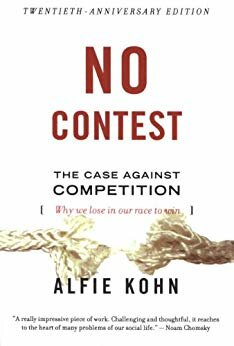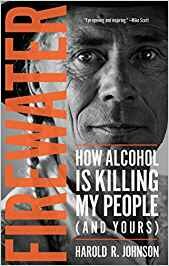Michael.S |
|
| Founder of the Lightning Path. Providing LP Connection Coach training and spiritual guidance. If you have spiritual questions, want spiritual guidance, or just want a boost to help you move forward, book a session |

The Sociological Web Space of Mike Sosteric
Michael.S |
|
| Founder of the Lightning Path. Providing LP Connection Coach training and spiritual guidance. If you have spiritual questions, want spiritual guidance, or just want a boost to help you move forward, book a session |
Through the medium of kinship, early humans developed cooperative arrangements that, according to Marshal Sahlins, were apparently mandated by virtue of the conditions of life. In his words, “The emerging human primate, in a life-and-death-struggle economic struggle with nature, could not afford the luxury of a social struggle. Co-operation, not competition, was essential…. Hobbe’s famous fantasy of a war of ‘all against all’ in the natural state could not be further from the truth.” (Sahlins quoted in Kohn, 35).
 The Case Against Competition
The Case Against CompetitionFirst published in 1986, Alfie Kohn’s book No Contest: The Case Against Competition provides a carefully researched and documented antidote to the idolatry of competition that passes for common and scientific sense in our Western societies. In this 324 page book Kohn painstakingly takes on, and dismisses, all the cherished myths of competition that make our modern nations go round.
Is competition inevitable?
Is competition a part of human nature?
Yes say the pundits; but no, says Kohn. In fact, says Kohn, proponents of competition who argue that competition is inherent in nature often ignore evidence to the contrary (i.e. that nature is far more co-operative), conflate biological definitions of competition (i.e. natural selection) with the human practice of competition, and even use deceptive rhetorical twists, drawing erroneous and faulty conclusions, just to prove their point. Continue reading “Competition – bad for you, bad for the planet”
Persons said to have mental diseases...have reasons for their actions
that must be understood; they cannot be treated or cured by drugs
or other medical interventions, but may be helped
to help themselves overcome the obstacles they face.
Thomas Szasz, The Myth of Mental Illness
In 1961 Thomas Szasz published a book entitled The Myth of Mental Illness. In this book, he basically argued that the psychiatric diagnosis of "mental illness" was a self-serving act of ego-aggrandizement and obedience to the System. He said it quite bluntly when he said that “it is a lie, an error...a naive revival of the somatic error." It is “political and professional self-interest united in turning a false belief into a lying fact" (Szasz 2010). Specifically, he says psychiatry is a System process that, much like the French guillotine makes it easier for the condemned to die, and easier for the executioner to carry out the deed. Put another way, the labelling of behavioural disturbances as mental illness makes it easier for the "socially downtrodden--to be ill and die." In particular, he says that the psychiatric and psychological diagnoses of something as a "mental illness" is a way to obscure the pain, suffering, and disjuncture that lies behind it. It is a way to obscure the "moral and political,” and also traumatic, nature of "mental illness." I would say it is a way to obscure the psychological and neurological damage done by The System. It is a way to press those who are damaged by the System into ignorance and silence so they can die quietly, without causing too many problems for the system.
Psychiatry is “an arm of the coercive apparatus of the state. And this is why today all of medicine threatens to become transformed from personal therapy into political tyranny.”
In his book, Szasz used Shakespeare’s Macbeth to underline this point, suggesting that Lady Macbeth’s “mental illness” is the result of guilt and shame caused by the disjuncture of her own murderous acts, and not some medical disease that can be cured, as her husband hopes it would be.
Was he right?
Was the categorization of behavioural and emotional disturbances as mental illness a politically and egoistically motivated categorization designed to heighten the status of the profession and obscure trauma caused by the System. You can decide for yourself if you choose to pick up the book, but he makes a pretty strong case.
What about his notion that mental illness does not exist? He based this argument on the idea that a lot of what is typically described as a mental illness is not really an illness in the biological sense. That is, mental illness is not the body’s reaction to a disease1 of the body, specified or not, but a reaction to “problems of living,” as he put it. He was only partly right about that. In some cases, there are no underlying pathologies that one can point to. For example, a child that develops an attachment or anxiety disorder because his parents are never around cannot be said to have a disease or an illness. Rather, the child is experiencing an adaptive biological response to the actual (or potential) neglect of one if its Seven Essential Needs. I say adaptive here because the anxiety, whining, and clinging characteristic of a child struggling with attachment are not pathological but adaptive. They are the child’s attempt to cajole the parents into staying. Suggesting that they are pathological in any way is the cardinal, formative, sin of psychiatry.
On the other hand, and this is important, nowadays we know that one’s environmental experiences (at home, at school, at work) impact the neurological constitution of the body’s brain and central nervous system. To put it simply, bad environments cause the brain to change, just like good environments do. Environments lead brain neurology, meaning they cause the brain to rewire. Bad environments can even cause brain damage if the trauma one experiences is sufficiently severe and chronic. At the point where chronic assault or neglect begins to change the wiring of the brain, we might be justified in saying that an anxiety “disorder” is a mental illness. I say “might” here because we would be much more correct to say the psychiatric “disorder” is an (functional or dysfunctional) adaptation to chronic psychic or physical assault, and chronic neglect of our essential needs. A functional adaptation would be one that leads, in the case of the anxious child, to the parent’s staying home. A dysfunctional adaptation would be one that encourages the parents to separate from there needy child even more. In my not so humble opinion this is a simple, elegant, eminently testable, formulation that is devoid of morality, subjectivity, and self-serving egoism characteristic, as Szasz said, of psychiatry, at least when he was writing his book.
It’s been almost sixty years since Thomas wrote his book condemning the psychiatric and psychological establishments for their self-serving misconceptualization of human psychic trauma. So, a reasonable question to close this off is, “has anything changed?” Not for a long time, sadly, but recently, things have begun to change. When a client comes to see a psychiatrist or psychologist, these professionals used to ask the question “what’s wrong with you?” Now, however, they are beginning to ask the question “what happened to you?” It’s a slow start but the reconceptualization is beginning to pick up steam. When this reconceptualization finally inches its way to the accelerating curve of the exponential distribution, it is going to revolutionize psychology and psychiatry so much so that, word to the wise, those who continue to rely on outdated conceptualizations will be seen as liabilities to the discipline.

References
DocDoc. n.d. “What is Illness: Symptoms, Causes, Diagnosis, and Treatment - Learn about medical topics on DocDoc.” DocDoc. Retrieved October 29, 2019 (https://www.docdoc.com/info/condition/illness/).
Szasz, Thomas. 2010. The Myth of Mental Illness. Harper Perennial.
Endnotes
1A disease is a “affliction of a specific organ or the entire body due to a harmful microorganism such as bacteria or virus, injury, chemical imbalances in the body, exposure to toxins, and production of immature cells. Examples of diseases are cancer, fractures, diabetes, cirrhosis, and psoriasis, among others.” Note, these definitions are taken from (DocDoc n.d.)

If we change our story about alcohol, if we stop accepting it as natural, normal, and necessary, if we stop telling ourselves that alcohol is medicine, that it dissolves grief, maybe we won’t have to stand at so many gravesides and mourn so many senseless deaths.
Harold Johnson, Firewater: How Alcohol Is Killing My People (and Yours)https://amzn.to/2D142T4
This book by Saskatchewan Crown Prosecutor and Woodlands Cree native Harold Johnson is a remarkable analysis of alcohol and its continued acceptance as a substance, despite the well-documented evils associated with its use. In this book, Johnson points out the problem is not addiction per se; the problem, for all of us, is that alcohol is a dangerous, addictive, and deadly substance. The problem is that alcohol short circuits our basic goodness. The problem is that alcohol is easily available. The problem is that there is no hope. The problem is hypocrisy. The problem is lack of leadership. The problem is that we tell ourselves stories about how wonderful alcohol is, about how it destresses and relaxes, how it lubricates social experiences, how it increases our enjoyment of life. The problem is, these stories deny the realities of the substance, and the emotional, psychological, physical, and spiritual damage and chaos that it causes. The problem is that red, white, yellow, or black, we all tell ourselves stories that teach ourselves there isn’t really a problem, or that the problem is just a few drunks.
Johnson exposes the old stories and suggests new ones, ones where we avoid alcohol and emphasize connection, ones were we quit judging and condemning an individual and instead look at the wider sociological and cultural factors. As Johnson says, we need to tell ourselves new stories that emphasize responsibility and connection and that help us understand, the problem isn’t an individual’s problem, it is a social, political, economic, and spiritual problem.
This book has a lot to recommend it to sociologists, psychologists, and anyone interested in alcohol, alcoholism, and healing. It is a fascinating case study. It is a sophisticated and powerful narrative. It is an open and honest recounting. Most of all, is a calling to quit telling ourselves delusional stories and instead, awaken to the truth and take necessary action to transform, not by judging, not by punishing, but by telling ourselves healing stories, and changing our world based on those.
[et_pb_section bb_built=”1″][et_pb_row][et_pb_column type=”4_4″][et_pb_post_title _builder_version=”3.4.1″ meta=”off” custom_margin=”32px|||” custom_padding=”32px||32px|” box_shadow_style=”preset1″ box_shadow_color=”rgba(21,181,0,0.3)” text_orientation=”center” featured_image=”off” /][/et_pb_column][/et_pb_row][et_pb_row _builder_version=”3.4.1″][et_pb_column type=”1_3″][et_pb_divider _builder_version=”3.0.106″ color=”#ffffff” show_divider=”off” /][et_pb_image _builder_version=”3.0.106″ show_in_lightbox=”off” url_new_window=”off” use_overlay=”off” align=”center” always_center_on_mobile=”on” force_fullwidth=”off” show_bottom_space=”on” box_shadow_style=”preset1″ src=”https://sociology.org/files/front-cover-800px.jpg” /][/et_pb_column][et_pb_column type=”2_3″][et_pb_divider _builder_version=”3.4.1″ show_divider=”off” height=”33px” /][et_pb_text admin_label=”Cudos” _builder_version=”3.4.1″ custom_padding=”25px|25px|25px|25px” border_color_all=”rgba(0,170,17,0.45)” box_shadow_style=”preset1″ box_shadow_color=”rgba(0,204,44,0.3)” header_2_line_height=”1.2em”]
Rocket Scientists’ Guide to Money and the Economy by Mike Sosteric was one of the best books that I have read in a really long time. Reading that book made me feel very ignorant about my idea about what was happening in the world, and the structure that it is built on. If I hadn’t read that book I would have no understanding of why rich are rich and the poor remain poor. Sosteric provides such an easy but creative way of understanding how and why the 1% holds the world’s wealth, and where the world is heading if we remain on the same track that we are now (Sociology student). Find more nice online bookstores for you!
PDF | Kindle | Amazon.com | Book Finder
[/et_pb_text][/et_pb_column][/et_pb_row][et_pb_row][et_pb_column type=”4_4″][et_pb_toggle _builder_version=”3.4.1″ title=”Table of Contents”]
[/et_pb_toggle][/et_pb_column][/et_pb_row][et_pb_row][et_pb_column type=”4_4″][et_pb_image _builder_version=”3.4.1″ src=”https://sociology.org/files/Capture-1.jpg” /][/et_pb_column][/et_pb_row][/et_pb_section]